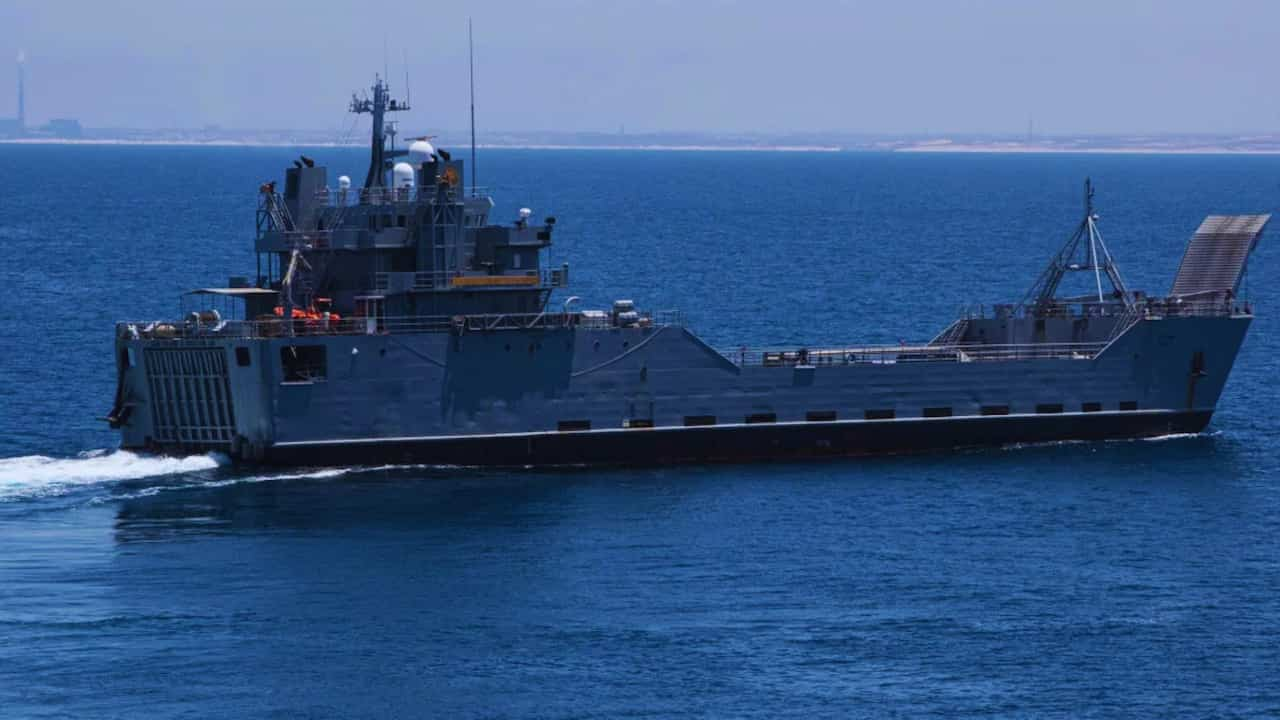Army’s Aging Fleet: US Watercraft Face Choppy Waters in Pacific Mission
As a news reporter, I’m here to shed light on a pressing issue facing the US Army’s watercraft fleet. A recent report by the Government Accountability Office (GAO) has uncovered significant problems with the Army’s boat fleet, raising concerns about its readiness for crucial missions in the Pacific region.
The Army’s watercraft, which played a key role in the Gaza pier mission earlier this year, are struggling to stay afloat in terms of maintenance and preparedness. The GAO’s findings present a concerning image of a fleet struggling to meet the military’s increasing demands in the Pacific theater.
Let’s dive into the numbers. Army policy requires these vessels to maintain a 90% mission-capable rate. However, the current rate sits at a dismal 40% this year.
This means that less than half of the fleet is ready to perform its duties at any given time. A sharp decline in the fleet’s size, nearly halving from 134 vessels to just 70 as of May this year, further compounds the situation.
Army officials aren’t sugarcoating the situation. They admit that these low mission-capable rates, coupled with the smaller fleet size, are hindering operational readiness and their ability to meet mission requirements. It’s a case of too few boats and too many problems.
The Gaza pier mission earlier this year brought these issues into sharp focus. The Joint Logistics Over the Shore (JLOTS) vessels lacked adequate resources and maintenance. A retired warrant officer and former chief engineer on Army watercraft bluntly stated that Army boats haven’t been prepared or capable of performing dangerous or real-world tasks for decades.
The aftermath of the Gaza mission further highlighted the fleet’s struggles. The military had to request civilian contractor support to bring the Army’s vessels back to the US, citing cost-effectiveness and safety concerns.
So, what’s causing these boats to take on water, figuratively speaking? The GAO report points to “significant maintenance challenges” as the main culprit.
Ageing vessels, supply shortages, and parts as outdated as a flip phone are the main culprits. One Landing Craft Utility vessel has been under maintenance since 2018, with repairs delayed by at least three years and costs ballooning by over $1.2 million.
Safety concerns are also causing significant disruption. The Army identified issues with the ramp on a Landing Craft Utility back in 2010 but didn’t replace essential safety components.
Fast forward to 2022, and a ramp fell off a vessel in open seas near Japan. It took a GAO briefing in 2023 for the Army to finally inspect all LCUs, finding that about one-third failed and needed repairs.
The Army isn’t sitting idle, though. Army Secretary Christine Wormuth says they’re “actively pursuing a holistic approach” to address these issues. They’re considering leasing civilian watercraft and even exploring the possibility of autonomous vessels in the future.
Col. Dave Butler, a spokesman for Army Chief of Staff Gen. Randy George, emphasized the importance of these watercraft, stating, “This is how the ground force, the Army, gets to war.” He added that the Army is looking at potentially replacing the existing fleet with autonomous vessels, noting that other industries are already moving in this direction.
The Army has also set up a governing board to oversee the watercraft, although the GAO found that as of May, the board hadn’t yet started taking steps on key responsibilities.
As we look to the horizon, it’s clear that the Army’s watercraft fleet faces choppy waters. With growing tensions in the Pacific region, the need for a ready and capable fleet has never been more critical. The Army’s efforts to modernize and address these issues will be crucial in ensuring they can meet future challenges head-on.
In the words of Col. Butler, “Maybe the future fleet is all autonomous; we just don’t know. We are examining all these aspects to modernize our methods of moving people, weapons, and equipment. As this story continues to unfold, we’ll keep you updated on the Army’s efforts to right this ship and navigate toward a more prepared and capable watercraft fleet.
